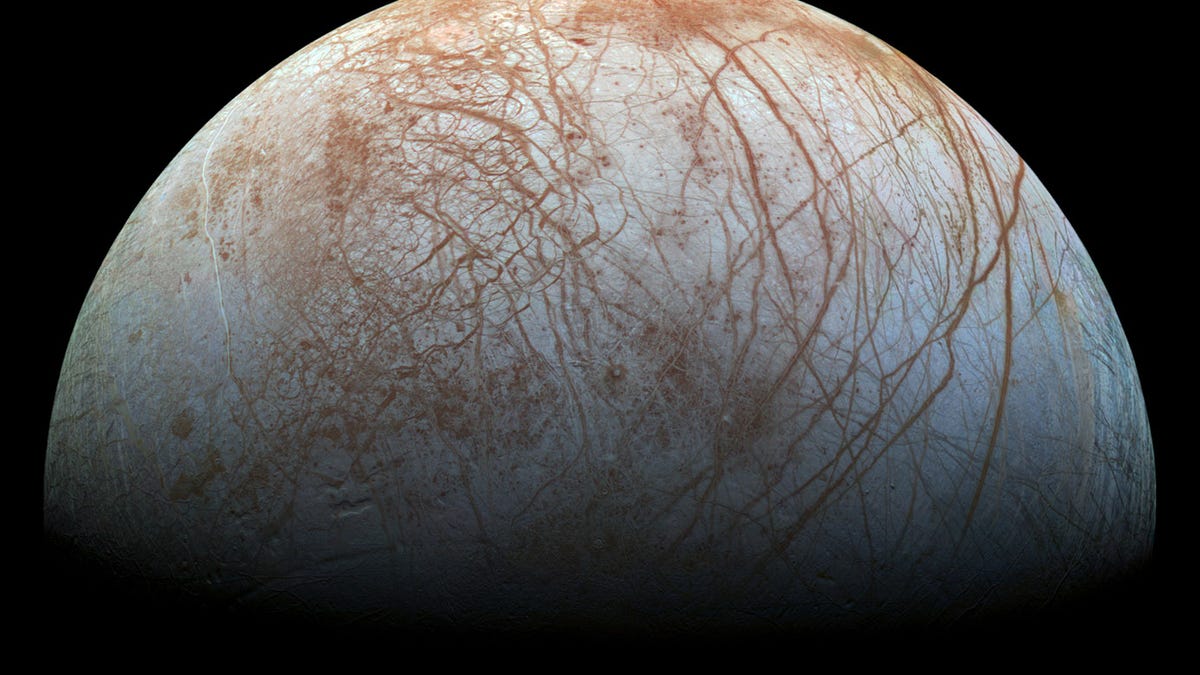Signs of Europa space geyser seen in decades-old NASA data
NASA wants to send a spacecraft to look for signs of alien life beneath the icy surface of Jupiter's moon.

The case for Jupiter's moon Europa as one of the best places to look for life beyond Earth just got a new boost from some old data.
New analysis of measurements taken by NASA's Galileo spacecraft over 20 years ago provides more evidence that water from an ocean beneath Europa's icy shell is shooting out into space via at least one large geyser.
Europa's hidden waters have become a prime target in the search for extraterrestrial life, and sending a spacecraft to take a sample of just such a geyser could be the most practical way to check it out.
A few years ago, the Hubble Space Telescope spotted what looked like water vapor plumes erupting off the icy surface of Europa. NASA is planning a mission to visit for several fly-bys of the distant world in the 2020s for a closer look.
That mission, currently dubbed Europa Clipper, could be informed by research published online Monday in the journal Nature Astronomy. A team led by space physicist Xianzhe Jia from the University of Michigan found signs of plumes in data collected by Galileo's closest pass by Europa in 1997. Galileo was sent plunging into Jupiter's atmosphere in 2003 to prevent a possible impact with Europa.
A few years back, NASA's Cassini spacecraft flew through a similar plume emanating from Saturn's moon Enceladus. Subsequent studies revealed the building blocks of life were present in that world's subsurface ocean.
Looking at the measurements from two decades ago, researchers say that changes in the magnetic field and plasma (basically super-hot space gas) around Europa picked up by Galileo can be explained by the presence of a plume like the one seen by Hubble. The team also zeroed in on the location of the plume on the moon's surface, which matches up with a "hot spot" that could be explained by warm water making its way up through Europa's icy shell, much like the famed geysers of Yellowstone and elsewhere on Earth.
"These results provide strong independent evidence of the presence of plumes at Europa," the study reads.
They could also provide a target destination for future missions to the outer solar system, including the European Space Agency's JUICE mission and Europa Clipper, which could get additional funding through a spending bill now working its way through the US Congress.
Crowd Control: A crowdsourced science fiction novel written by CNET readers.
Solving for XX: The tech industry seeks to overcome outdated ideas about "women in tech."

